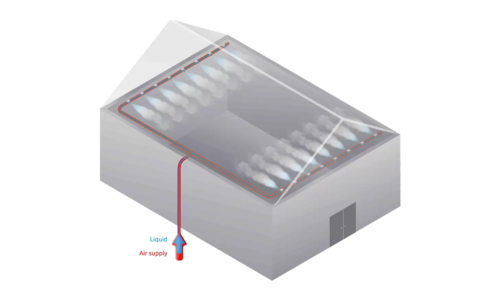
Air atomising spray nozzles
Air atomising nozzles create a very fine spray of small droplets and are used for cooling, humidification, lubrication, surface treatment, etc.
The spray is created by mixing air with the liquid in the spray process, thus creating relatively smaller droplets compared to other nozzles. Air atomising nozzles are also the best solution if you have a high viscosity liquid, where a 'regular' nozzle is unable to create small enough droplets.
The product group consists of a number of components, which can be combined in different ways to create the right drop size and flow for a particular application.


SA SpiralAir
- 2.0 - 80 l/min
- 20° - 90°
- For harsh environments
- Full cone or flat fan
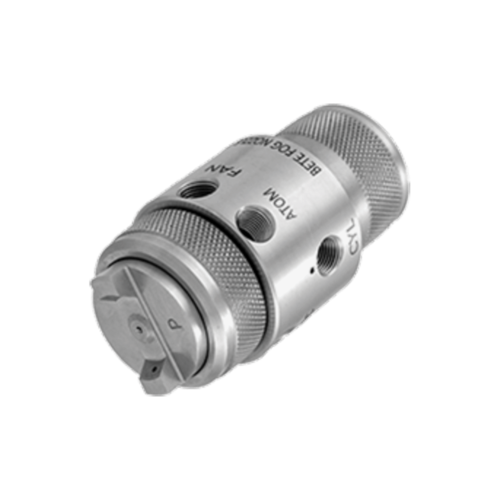

SAM
- 2.7 - 174 l/h (liquid)
- 80°
- Precise atomised intermittent spraying and metering of the liquid flow rate
- External mixing
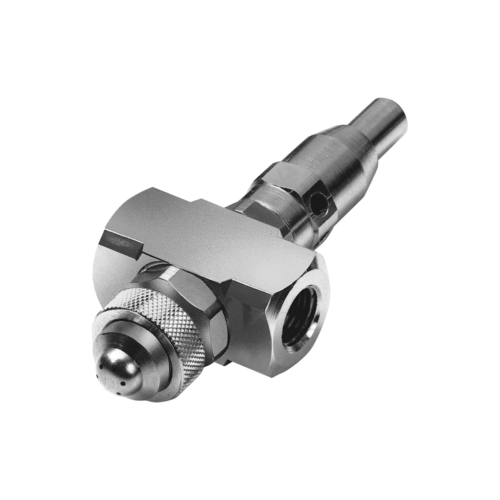

XAAD
- 1.7 - 93 l/hr (liquid)
- 70°
- Very fine atomisation
- Internal mixing - hollow cone


XAEF
- 3 - 33 l/hr (liquid)
- 75° (60° - 90°)
- External mixing - flat fan


XAER
- 2.7 - 234 l/hr (liquid)
- 20°
- External mixing - full cone


XAFF
- 5.7 - 26 l/hr (liquid)
- 145°
- Very fine atomisation
- Internal mixing - flat fan
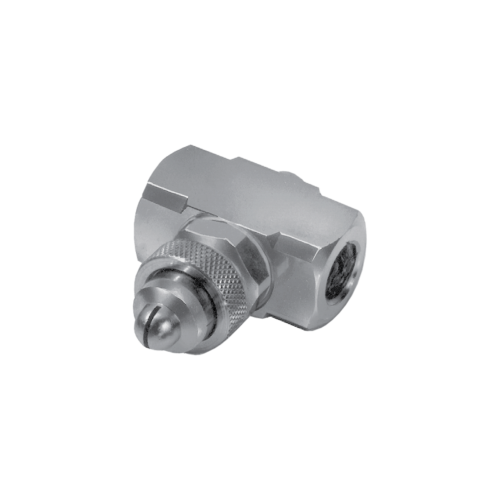

XAPF
- 1 - 140 l/hr (liquid)
- 85° (80° - 90°)
- Very fine atomisation
- Internal mixing - flat fan


XAPR
- 1.4 - 95 l/hr (liquid)
- 17°
- Very fine atomisation
- Internal mixing - full cone


XASF
- 0.8 - 7.3 l/hr (liquid)
- 60° - 85°
- Very fine atomisation
- Internal mixing - flat fan
- Siphon-fed
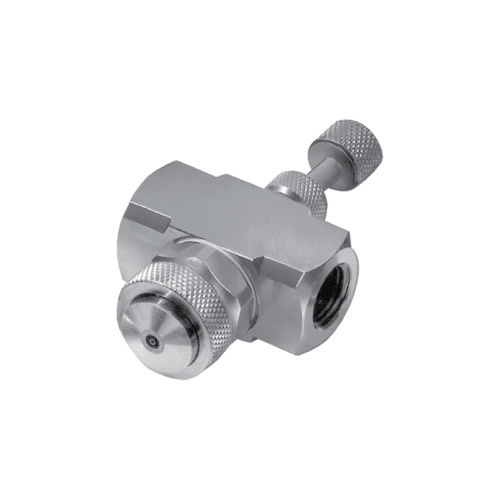

XASR
- 0.5 - 26 l/hr (liquid)
- 12° - 22°
- Very fine atomisation
- Internal mixing - full cone
- Siphon-fed


XAXW
- 4.2 - 48 l/hr (liquid)
- 180°
- Very fine atomisation
- Internal mixing - hollow cone
Various types of air atomising nozzles
Air atomising nozzles atomise the liquid by mixing air and liquid to form a very fine spray. There are two ways to atomise liquid with air - internal mixing or external mixing.
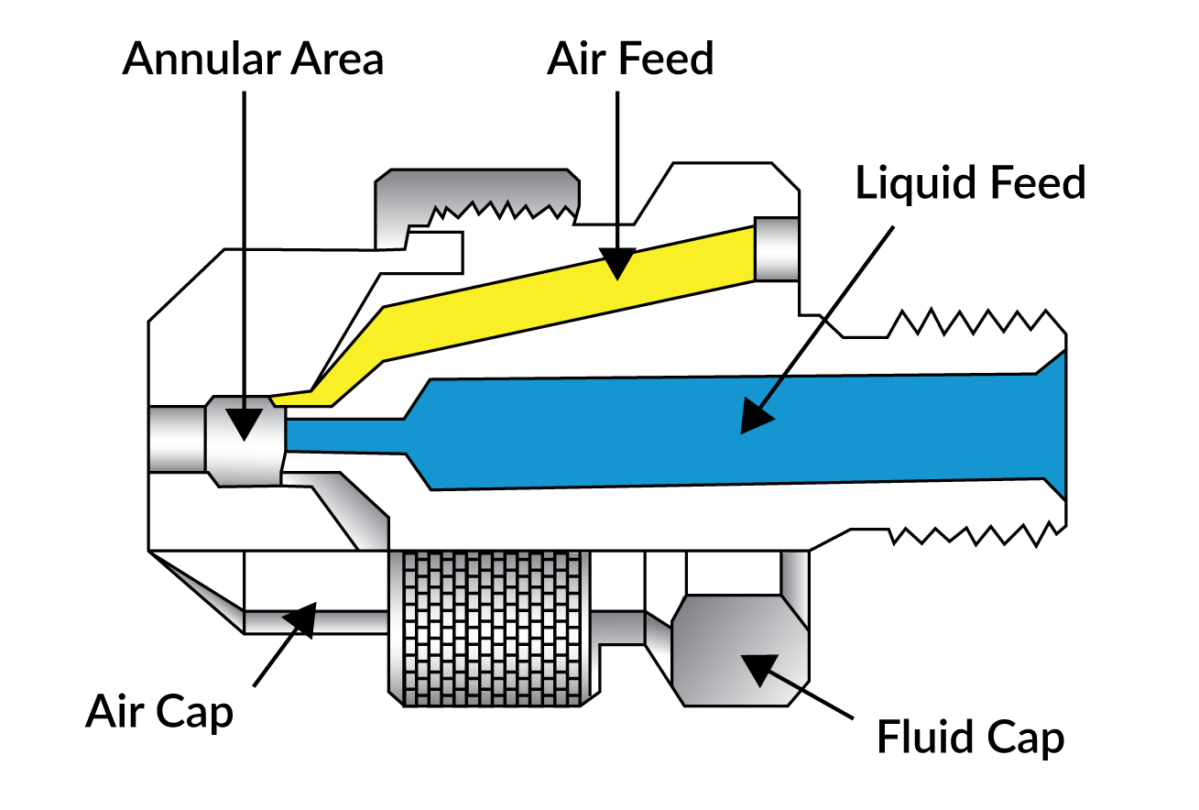
Internal mixing
- Liquid and air are mixed inside the nozzle and leave the nozzle through the same outlet hole.
- Air and liquid flow are not independent of each other. A change in air flow will affect liquid flow.
- Not suitable for liquids with a viscosity above 200 cP.

External mixing
- Air and liquid exit the nozzle through two separate orifices.
- Air and liquid flow rates can be controlled independently, allowing precise metering of the liquid flow rate
- Suitable for all types of liquids, even above 200 cP.
Choose the right spray nozzle for an optimised spray process
Each type of spray nozzle has a specific flow rate, spray pattern and droplet size. To optimise the spray process, it is important to understand how different parameters affect the choice of spray nozzle and solution.
- What is the function of the spray nozzle and the spray process?Read the full answer
The first step when choosing the right spray nozzle is to define the function and application of the spray process, such as cooling a gas, washing a tank or flushing a conveyor belt. Type of spray nozzle, thus also spray pattern and droplet size, are important to consider in order to optimise the spray process.
- Which droplet size is most suitable for the spray process?Read the full answer
Droplet size is often critical in optimising a spray process. Many processes, such as gas cooling and gas scrubbing, depend on exposing the maximum total liquid surface area. The liquid then needs to be distributed in a large number of small droplets to create as much total surface area as possible. Other spray processes ...
- What surface should the spray cover? How should the nozzle be positioned?Read the full answer
The position of the nozzle over the target (D) and the area to be covered by the spray (B) are important to know in order to choose the right spray angle (A). The spray angle is measured near the nozzle orifice and the droplets are immediately affected by external forces such as gravity, air and gas flow.
- Desired flow rate? Available pressure?Read the full answer
Desired volume flow depends on the specific spray process. Most spray processes have general rules of thumb for flow ranges, but in many cases on-site testing is needed to achieve the right results.
- What type of liquid is used in the spray process?Read the full answer
A liquid's specific gravity, viscosity and the presence of particles affect the spray characteristics of the nozzle.
- Are there external factors affecting the nozzle spray?Read the full answer
Sometimes the spray is affected by external forces such as process gas flows, air flows or wind.
- Which material is most suitable for the spray process?Read the full answer
Listed below are a number of factors that should be considered when selecting materials for a specific nozzle. An incorrect choice of material is likely to affect the performance and life of the nozzle. We are happy to help and advise on which material is most suitable in your ...
- What are the benefits of an optimised spray process?Read the full answer
There are many factors to consider when selecting a nozzle for a specific spray process. An optimised spray process can make a big difference, contributing to: improved product and process quality increased production and reduced time for unplanned stops reduced maintenance costs lower operating costs by reducing the use of ...

Documents for download

Previous projects
Read more about a selection of customised solutions and projects we have carried out for our industry colleagues and partners.
Right solution, delivered on time
Delivering the right solution on time requires co-operation, structure, attention to detail and following a process throughout the project.
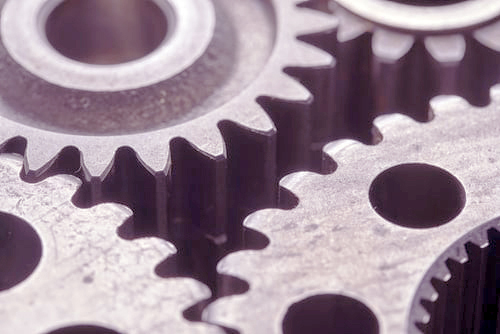
FAQ Spray nozzles & systems
Here you will find a variety of questions and answers about spray nozzles and spray systems.







